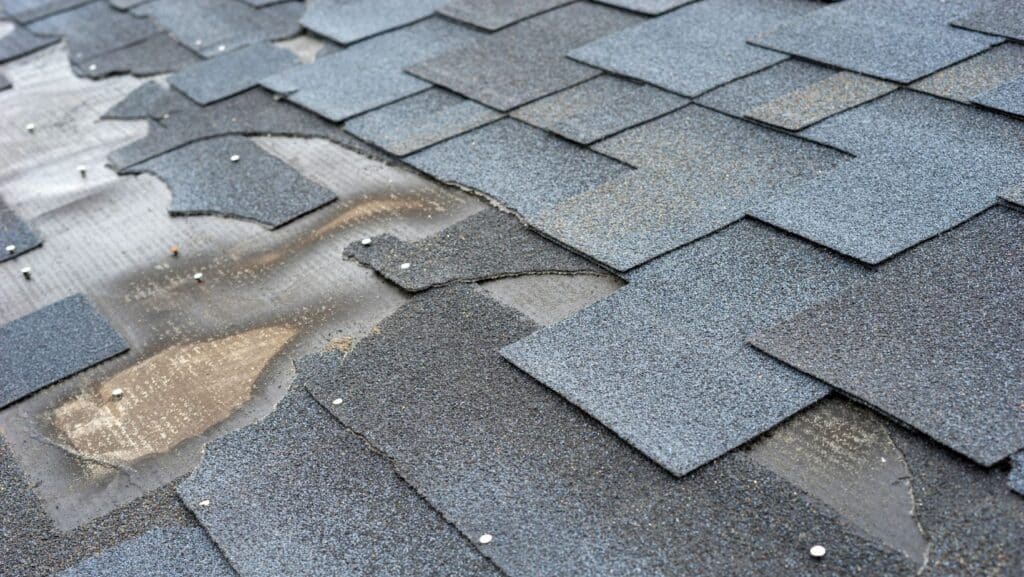Deciding whether to repair or replace your roof is a significant dilemma faced by many homeowners. This decision not only impacts the safety and security of your home but also involves a substantial financial commitment. Understanding when a repair suffices and when a replacement is necessary can save you from future headaches and financial strain. The key lies in recognizing the signs that indicate your roof’s lifespan is nearing its end or that damage is too extensive for mere repairs.
Recognizing these signs early can prevent the kind of damage that affects your home’s structural integrity and your quality of life. A roof does more than just protect your home from the elements; it contributes to energy efficiency, aesthetics, and the overall value of your property. This blog post aims to guide you through identifying the crucial indicators that suggest it’s time for a roof replacement, ensuring you make an informed decision that safeguards your investment.
Understanding Roof Lifespan

Every roofing material has an expected lifespan, which plays a pivotal role in determining whether to opt for repairs or a complete replacement. For instance, asphalt shingles, one of the most common roofing materials, typically last between 20 to 30 years, while metal roofs can last up to 50 years or more. Knowing the age of your roof gives you a baseline for understanding its remaining lifespan. If your roof is approaching or has surpassed its expected lifespan, it might be more economical and safer in the long run to opt for a replacement rather than investing in diminishing returns on repairs.
The lifespan of your roof isn’t just about the years it’s been sitting on top of your house; it’s also about how it’s weathered the elements over those years. Factors such as climate, maintenance, and the quality of the installation can all affect how long your roof lasts. If you’ve moved into a previously owned home, try to obtain the roof’s installation date and maintenance history. This information will help you gauge the current condition of your roof and anticipate when a replacement might be necessary.
Visible Signs of Aging and Damage
One of the most straightforward indicators that your roof needs replacing is visible signs of aging and damage. If you notice a significant number of your shingles are curling, cracking, missing, or covered with moss and algae, it’s a signal that their protective capabilities are compromised. These physical signs often indicate underlying issues that mere repairs might not adequately address, suggesting that a replacement could be the more sensible option.
In addition to damaged shingles, significant discoloration can also be a red flag. While some degree of fading is normal due to exposure to sunlight, widespread or uneven discoloration can indicate granule loss. Granules protect shingles from UV rays, and without them, the shingles can quickly deteriorate. When these signs become widespread across your roof, it’s an indication that the material is failing and a replacement is necessary to protect your home effectively.
Water Damage and Leaks
Frequent leaks are a telltale sign that your roofing system may be failing. While an occasional leak can often be repaired, recurring or multiple leaks suggest a systemic problem that could require a more comprehensive solution. Water damage in your attic or on your ceilings, especially after rain, indicates that moisture is penetrating your roof’s defenses, possibly compromising its structural integrity.
The presence of water damage or leaks also raises concerns about mold and mildew, which can affect the air quality inside your home and lead to health issues for its occupants. If leaks and water damage are a common occurrence, it’s critical to consider whether repairs will offer a long-term solution or if a roof replacement is the more prudent choice to ensure your home remains safe and dry.
Sagging and Structural Issues
A sagging roof is a clear indication of structural issues that require immediate attention. This sagging can result from prolonged exposure to moisture, poor initial construction, or the roof bearing more weight than it was designed to handle, such as from heavy snowfall. Not only does a sagging roof detract from your home’s appearance, but it also poses a significant safety risk, as it could collapse under further stress.
Structural issues often extend beyond just the roofing material, affecting the decking and support structure beneath. In such cases, patch repairs may not suffice, as they don’t address the root of the problem. A complete roof replacement allows you to correct these structural issues, ensuring your home is safe and sound for years to come.
Energy Efficiency Concerns
An old or underperforming roof can lead to increased energy bills due to inadequate insulation and ventilation. Modern roofing materials and technologies offer superior energy efficiency, reflecting sunlight and improving airflow to maintain a comfortable temperature inside your home. If you notice a spike in your heating or cooling costs, it might be time to evaluate the efficiency of your current roofing system.
Replacing an inefficient roof not only contributes to a more comfortable living environment but also to significant savings on energy costs over time. With advancements in roofing materials, opting for a replacement can enhance your home’s energy efficiency, making it a smart investment in the long run.
Extent of Damage
Assessing the extent of damage is crucial in deciding between repair and replacement. Minor issues confined to a small area can often be fixed with repairs. However, when damage is extensive, affecting large portions of the roof or the underlying structures, replacement becomes a more cost-effective and safer option. It’s important to conduct a thorough inspection or consult a professional to understand the full extent of the damage and make an informed decision.
Damage isn’t always visible from the ground or to the untrained eye. Hidden problems, such as water damage to the decking beneath the shingles, can have serious consequences if not addressed. A professional roofing contractor can provide a detailed assessment, helping you understand the condition of your roof and the best course of action.
Cost-Benefit Analysis of Repair vs. Replacement
Performing a cost-benefit analysis can help you weigh the immediate costs of repairs against the long-term benefits of a replacement. Frequent repairs can add up, making a replacement the more economical choice over time. Additionally, a new roof can increase your home’s resale value, offer better energy efficiency, and come with warranties that provide peace of mind.
Consider the age of your roof and its remaining lifespan when making this analysis. Investing in a new roof might seem like a significant upfront cost, but if your current roof is near the end of its service life, replacement could save you money and hassle in the long run. Consulting with a professional roofing contractor can provide insights into the most cost-effective solution for your situation.
Professional Evaluation and Recommendations
A professional evaluation is invaluable in determining whether your roof needs replacing. Experienced roofing contractors can offer recommendations based on a thorough inspection of your roof’s condition. They can identify issues you might have missed and provide a detailed explanation of the necessary repairs or the benefits of a replacement.
When selecting a contractor for an evaluation, choose someone with a good reputation and the necessary expertise to assess your specific type of roofing. They should provide a comprehensive report on the condition of your roof, including photographs and a clear explanation of any issues found, along with their recommendations for the best course of action.
Preparing for Roof Replacement
If a roof replacement is deemed necessary, preparing for the project is the next step. This preparation includes setting a budget, choosing the right materials, and selecting a reputable contractor. Modern roofing options offer a variety of materials and styles, allowing you to enhance your home’s appearance and functionality. Researching these options and understanding their benefits and drawbacks will help you make an informed decision.
Choosing the right contractor is crucial for a successful roof replacement. Look for a contractor with experience in the type of roof you’re installing, good reviews, and a solid warranty on their workmanship. A reputable contractor will ensure that your new roof is installed correctly, providing lasting protection for your home.
Recognizing the signs that you need a roof replacement instead of repair is crucial for maintaining the safety, efficiency, and value of your home. From visible damage and leaks to energy efficiency concerns and structural issues, understanding these indicators can help you make an informed decision about your roof. A professional evaluation can provide clarity, guiding you toward the most cost-effective and beneficial solution.
If you’re facing the decision of whether to repair or replace your roof, Advosy is here to help. Our team of experienced professionals can assess your roof’s condition and provide you with the information you need to make the right choice for your home. Contact Advosy today to ensure your roof continues to protect your home for years to come.
Proactively addressing roofing issues by recognizing the signs of significant wear or damage ensures the longevity of your roofing system. By making informed decisions, you can avoid unnecessary repairs, enhance your home’s energy efficiency, and protect your investment, ensuring peace of mind for you and your family.


